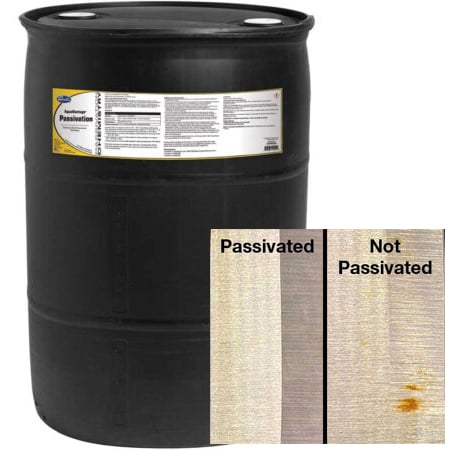
AquaVantage® Passivation
- Conforms to AMS 2700 Method 2, ASTM 380 & ASTM 967
- Compatible with a wide range of stainless-steel alloys
- Fast acting (effective in as little as 4 minutes)
- Highly dilutable formula
- Effective in a wide range of bath temperatures
AquaVantage® Passivation is a dilutable citric acid formulation specifically developed for the passivation of stainless-steel parts. AquaVantage Passivation conforms to multiple aerospace specifications and is specifically formulated for use in the Space, Aerospace, and Medical manufacturing industries. This product has been designed to be used in conjunction with Brulin brand immersion or ultrasonic detergents.
What is Passivation?
Passivation is a widely used metal finishing process to prevent corrosion. In stainless steel, the passivation process uses nitric acid or citric acid to remove free iron from the surface. This is not a coating process, or an etching process. This process changes the surface properties of the metal itself.
Why is Passivation Important?
The chemical treatment leads to a protective oxide layer that is less likely to chemically react with air and cause corrosion.
How does Passivation Work?
In stainless steel, passivation means removing the free iron from the surface of the metal using an acid solution to prevent rust. Citric acid does NOT remove other elements in the alloy effectively limiting the depth of the final chrome oxide layer. Citric acid passivation selectively removes iron over nickel and chromium leaving a thicker corrosion resistant oxide layer than nitric acid passivation.
What are some Process Considerations?
- Passivation should be performed only on surfaces free from water breaks and visible rust or scale.
- Removal of rust, scale and other contaminates will require additional processing or chemistries as this product is not designed for those applications.
- Carburized and Nitrided surfaces are not suitable for passivation.
- It is recommended that this passivation process be used prior to heating corrosion resistant steel parts to temperatures exceeding 1200°F, (649°C) to prevent diffusion of free Iron from the surface into the surface of the parts.

